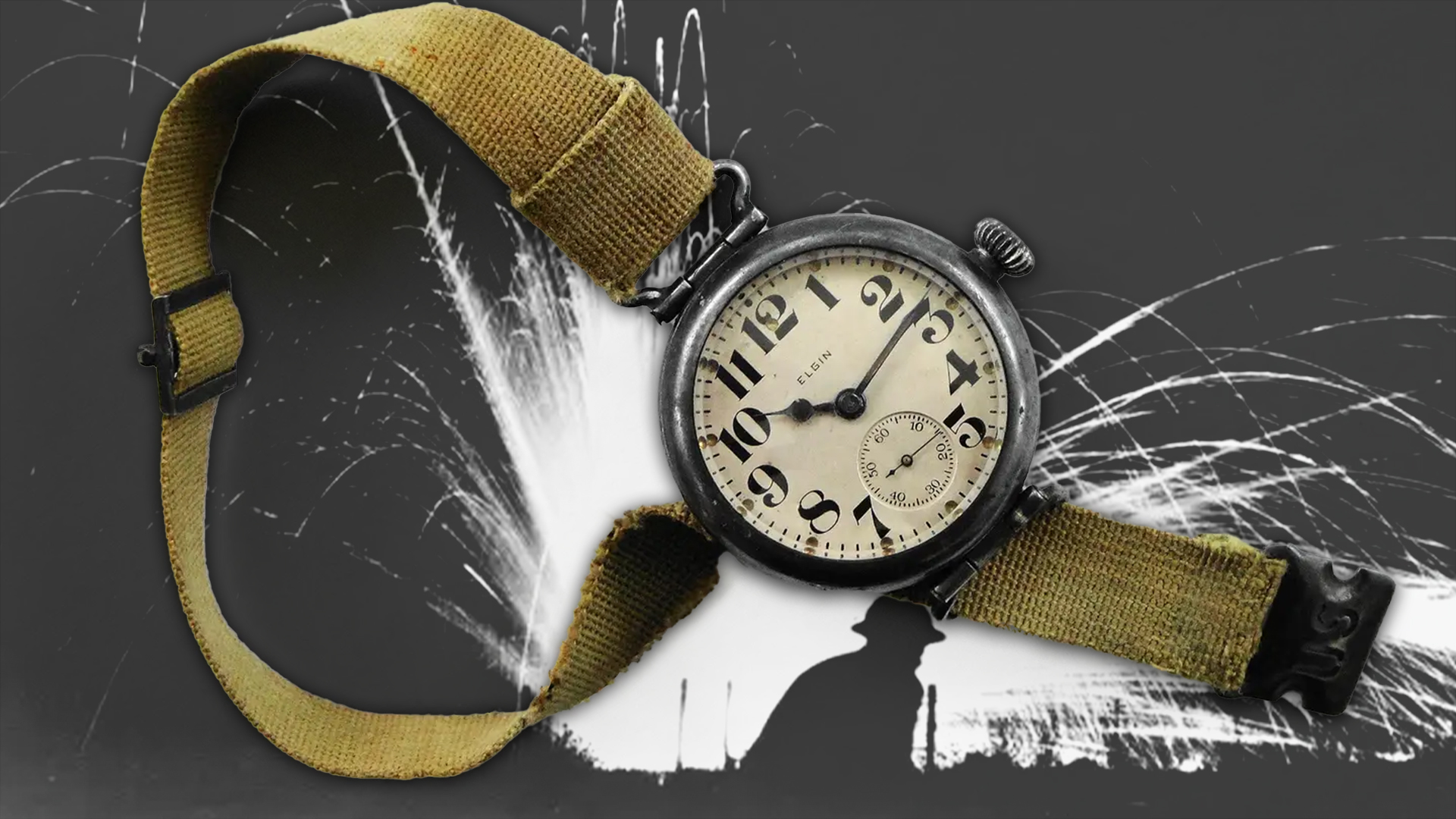

World War I is largely remembered for mud, trenches, and barbed wire, but it also marked a significant turning point in the history of timepieces.
Prior to the United States’ entry into the war, many Americans had pocket watches. But that began to change when the Yanks started heading “over there” to fight the Kaiser, said Stan Czubernat, an expert in American-made World War I watches.
“A wristwatch, aka the ‘trench watch’, was far more convenient for a soldier in the trenches,” Czubernat told Task & Purpose. “Rather than fumbling around and reaching into your pockets to pull out your pocket watch, all a soldier had to do was look at his wrist. Almost all advertising for military watches had switched over to wristwatches by the time the United States entered the war in spring of 1917.”
Czubernat is certainly an expert on this subject. He is an author whose books include “Elgin Trench Watches of the Great War” and “Waltham Trench Watches of the Great War.” He is also the founder and watchmaker for LRF Antique Watches, which restores and sells watches from World War I.
One could argue that no one watches World War I watches as watchfully as he does.
Subscribe to Task & Purpose Today. Get the latest military news and culture in your inbox daily.
The U.S. Army began embracing wristwatches before Congress declared war on Germany in April 1917, Czubernat said. Four years earlier, the War Department issued a bulletin explaining which soldiers would be issued wristwatches, such as corporals, sergeants, and scouts in battalion headquarters detachments.
“These were the highly educated men that were in charge of making sure that everything was officially tested and approved for military usage,” Czubernat said.

The U.S. Army Signal Corps Engineering & Research Division, led by then Army Lt. Col. Joseph Mauborgne, would set the standard for Army wristwatches, Czubernat said.
As the Army’s “technology” department, the Signal Corps oversaw testing timepieces and purchasing wristwatches for soldiers, Czubernat said. Those wristwatch models that passed the necessary tests would then be distributed by the U.S. Army Quartermaster Corps.
Czubernat’s research indicates that the Army announced the standards for all purchased wristwatches as early as October 1916. The wristwatch specifications would change two or three more times in the following two years as technology improved.
“In 1916 the wristwatch used was very basic but by the time the war was nearing its end the Americans, specifically Charles Depollier of J. Depollier & Son, had perfected the waterproof wristwatch,” Czubernat said. “Depollier worked hand in hand with Lieutenant Colonel Mauborgne’s team at the Engineering & Research Division to produce the world’s first waterproof wristwatch specification in late 1918.”
While wristwatches were issued to tens of thousands of U.S. troops, most enlisted servicemen and officers purchased their own wristwatches, which were available at the PX and ship’s story, Czubernat said. At the time, the wristwatch market was dominated by companies such as Elgin, Waltham, Illinois, Hamilton, and Depollier & Son. All their timepieces were categorized as “trench watches,” but some had proper names, such as the Admiral Benson and General Funston watches.
“It was also very popular for a man to receive a wristwatch as a gift from friends and family upon his enlistment,” Czubernat said. “The Army made higher-end wristwatches available for purchase to officers.”
After the war, the “trench watches” continued to evolve, he said. In late 1918, wristwatches underwent a technological revolution that endures to this day in how the watch strap is attached to the timepiece. Thus, the wristwatches that American GIs used in World War II were far different from what the previous generation of U.S. troops had worn.
The U.S. military’s contribution to the evolution of timepieces continues to this day. The Air Force recently distributed smartwatches to more than 1,000 first sergeants to help monitor their stress levels, according to Military.com.
Joseph Mauborgne would be proud.
The latest on Task & Purpose
- US Marine is top student at Royal Marine Commando course
- Legendary Combat Controller from Task Force Dagger dies at 51
- Army must “increase” fitness standards, but can use gender-specific scores
- The Navy’s newest ship is named for a Medal of Honor recipient
- A new Army supercomputer gets a Medal of Honor namesake